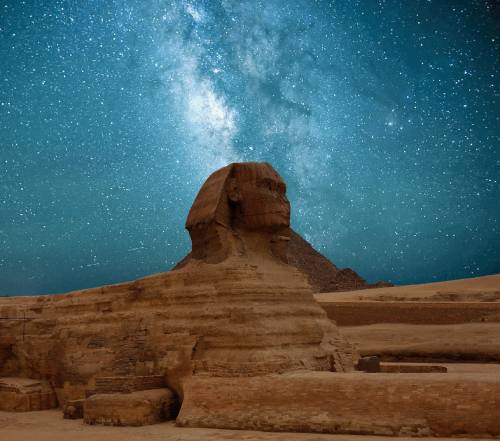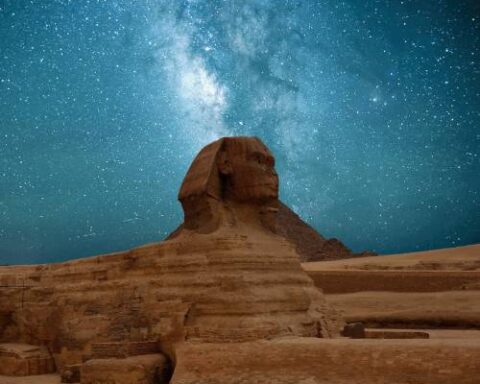Calendars have always been essential in our world — and right now is no different. The Calendar is essential to almost everything we do in life. Every appointment and every meeting has a timeframe that has to be followed. To gain control over your time, productivity, and your life — you need a Calendar.
Have you ever wondered where the modern calendar came from? Let’s examine the different calendar types humans have used throughout history.
Types of Calendars
The three main types of calendar in use throughout history are the solar calendar, the lunar calendar, and the luni-solar calendar. Ancient Egyptians used sidereal (star) calendars as well. A given society often uses more than one type of calendar simultaneously.
Solar calendars.
For thousands of years, solar calendars have kept pace with tropical years, so the seasons occur at the same time. An accurate estimate of the tropical year is essential to building a solar calendar.
Egyptians probably invented a solar calendar around 2050 BCE based on Sirius reappearances in the eastern sky, coinciding with the Nile River flooding. The measurement was 365.25, however. Obviously, the extra quarter of a day isn’t practical.
Julius Caesar established the Julian calendar in the Roman Empire to solve this problem, with three years of 365 days followed by a leap year of 366 days. There’s still an error even though leap years were introduced. By adopting 365.25 days, the calendar year still differs from the mean tropical year, which is only 365.24219 days. A tropical year is just under 11 minutes longer than a calendar year since 365.25 – 365.24219 = 0.00781 days. In the long run, this error adds up to almost eight days earlier seasons in the calendar after 1000 years.
As a result of the calendrical reform initiated by Pope Gregory XIII (1502–85), the Gregorian calendar, the major solar calendar in use today, was created.
The discrepancies are fixed by only having century leap years when they’re exactly divisible by 400. In this case, we are talking about the century rule. As a result of adopting the century rule, the Gregorian calendar year is not 365.25 days, but 365.2425 days.
As a result, there is one century leap year for every 400 years of the Common Era, which is 400, 800, 1200, 1600, 2000, 2400, etc. A 0.00781-day error accumulates in a Gregorian calendar year over 400 years to 0.00781 x 400 = 3.124 days. The final error is 3.124 – 3 = 0.124 days in 400 calendar years due to omitting three century leap years. Per year, this works out to only 0.124 x 86400/400 = 26.78 seconds. The Gregorian calendar year, therefore, lasts 26.78 seconds longer than a tropical calendar year.
Lunar calendars.
According to lunar calendars, each synodic month lasts for 29.5 days, and a year lasts for 354 days. Every month began with the first sighting of the young waxing crescent Moon just after sunset. It is more common today to use tables that predict when the crescent Moon will first appear.
Sumerians probably developed the first calendar based entirely on lunar phases. However, among the ancient cultures that developed lunar calendars were the Hebrews, Romans, Celts, and Germans. Islamic calendars are the most commonly used lunar calendars today.
Due to the fact that a calendar cannot have half days, six months with 30 days and six months with 29 mean solar days are used to accommodate the 29-day length of the synodic month. As a result, such a calendar runs fast against a solar calendar, such as the Gregorian calendar, by about 11.25 days. Consequently, lunar calendars are independent of the seasonal cycle. As the seasons march backward in the lunar calendar, every day will appear 11.25 days earlier than in a Gregorian calendar, making a complete cycle of the seasons in about 32.5 years.
Luni-solar calendars.
In the past, lunar calendars have been considered disadvantageous because they don’t keep pace with seasons. It is for this reason that many societies have adopted hybrid lunisolar-solar calendars.
Various devices are used to bridge the missing 11.25 days in these lunar calendars so that they end up close to tropical years, the years of the seasons. For example, every eight years, the ancient Greeks added 90 days to their lunar calendar of 354 days. According to this calculation, 11¼ x 8 = 90 days.
In some years, it may be possible to insert occasional intercalary synodic months. Metonic cycles can be used to determine the number of intercalary months. According to our calculations, seven synodic years (each consisting of 13 months) followed by twelve synodic years (235 synodic months) correspond almost precisely to 19 tropical years.
(7 x 13 x 29.5) + (12 x 12 x 29.5) = 2684.5 + 4248 = 6932.5 days;
6932.5 / 365.25 = 18.98 tropical years.
As a result, 7 intercalary months are needed over a 19-year period. At around 432 BCE, the Babylonians may have invented the Metonic cycle around the same time as the Greek astronomer Meton of Athens.
Sidereal calendars.
Many cultures have invented constellations, patterns that help them interpret the stars, which reflect their mythologies. In modern astronomy, there are 88 official constellations that cover the entire sky. They’re mostly from Babylonian, Greek, and Arabic civilizations in the northern sky.
At different times of the year, different constellations of stars dominate the night sky as the Earth orbits the Sun. Ancient people must have recognized this fact and constructed sidereal calendars based on the movement of the stars, as did the ancient Egyptians, Greeks, and Babylonians.
Historical Calendars
Sumerian Calendar
In Mesopotamia (modern-day Iraq), calendars were first used approximately 3100 BC.
A year was divided into 12 lunar months, each of 29 or 30 days, according to the Sumerian calendar. Observing a new moon began each month, making this a lunisolar calendar. As a result of the diversity of religions in Sumeria, the Sumerian months did not share a uniform name. Due to this, scribes and scholars called them “the first month,” “the fifth month,” etc. Every three years or so, an extra intercalary month was added to the lunar year of 354 days, similar to a Gregorian leap year.
Unlike our modern calendar, the Sumerian calendar didn’t have weeks. Every month, the first, seventh, and fifteenth of the month were usually holy days and days off from work. Additionally, there were feast days that varied from city to city.
Each day was divided into twelve hours, each lasting one-sixth of a day and six nights lasting one-sixth of a night. Due to this, daylight hours vary from season to season, being shorter in the winter and longer in the summer.
Egyptian Calendar
Ancient Egyptian calendars are believed to have originated around 2510 BC, but the exact origin is unknown. In the ancient Egyptian era, lunar calendars were used exclusively until the solar calendar was adopted.
As for their daily lives, the ancient Egyptians used a solar calendar that contained 365 days per year instead of the lunar calendar, which was used for festivals and rituals.
Agrarian lifestyle (meaning cultivating the land) was divided into three, four-month seasons, each named after a significant event.
- During the first season, there was flooding or inundation, which is known as Akhet. Ka-Hr-Ka, Hwt-Hrw, and Tekh were included in this time period.
- Proyet, which means emergence, was the name of the second season. It lasted four months: Sf-Bdt, Redh Wer, Redh Neds, and Renwet.
- Shomu, which means low water, was the third season. There were four months in its calendar: Hnsw, Hnt-Htj, Ipt-Hmt, and Wep-Renpet.
The month was divided into three ten-day periods called decans or decades. Even though the months had individual names, they were often referred to by their festival names. The Egyptians didn’t work on the last two days of each decade because they were considered holidays.
Additionally, according to the Egyptian solar calendar, a month was 30 days long. Due to the lack of days in a year, the Egyptians added an intercalary month.
As a result of the intercalary month, the Egyptian solar calendar lost one-fourth of a day every year. During the five intercalary days, the Egyptians weren’t expected to work to celebrate their gods’ birthdays.
Roman Calendar
A lot has happened to the Roman calendar over the centuries. In 738 BC, King Romulus introduced the first one. In time, the Julian calendar took over. After the Gregorian calendar was introduced, it became the most commonly used calendar in the world.
Originally, the Romans used a calendar with 304 days; Martis, Aprilis, Maius, Junius, Quintilis, Sextilis, September, October, November, and December. Also, there were no weeks.
Every month, the first, seventh, and fifteenth days were called kalends, nones, and ides. As the Moon waxed, the first quarter was reached, and the full was reached. Each day of the month was named according to when it fell before kalends, nones, or ides. The addition of two extra months, Januarius and Februarius, made a year with 12 months.
They probably had the following number of days in each month without intercalary adjustments:
- Martis (31)
- Aprilis (29)
- Maius (31)
- Junius (29)
- Quintilis (31)
- Sextilis (29)
- September (29)
- October (31)
- November (29)
- December (29)
- Januarius (29)
- Februarius (28)
As a result, the year was 355 days long.
In order to keep synchrony with the tropical year, intercalary corrections were attempted. Essentially, an intercalary month was inserted by dropping the last five days of February and adding an intercalary month (Intercalans or Mercedonius) lasting 27 or 28 days every two years. The average length of a year over four years is [355 + (350 + 27) + 355 + (350 + 28)]/4 = 366.25 days.
Nevertheless, intercalary adjustments were often manipulated for political gain rather than for proper timekeeping. Those who organized the calendar (Pontifex Maximus and College of Pontiffs) would make intercalary adjustments to prolong the tenure of favored officials (magistrates) or to shorten the term of those who were out of favor.
Julian Calendar
The Roman calendar was reformatted by Julius Caesar in 48 BC. In accordance with the rule of their political allies, the high priests adjusted the length of the year or skipped intercalation if it suited them. This resulted in the calendar drifting out of alignment with the year. Outside Rome, few people knew the current date because of the Second Punic War against Carthage and the Civil Wars, in particular. There were only five intercalary months between 63 BC and 46 BC, and none between 51 BC and 46 BC. According to historians, these were the “years of confusion.” Julius Caesar had spent time in Egypt, knew what day it was, and wanted to maintain the calendar in a more conventional manner.
The 67 additional days Caesar added that year in 46 BC resulted from the intercalary months between November and December that Caesar added after returning from his African campaign. In 46 BC, the calendar was 445 days long since the year had already been increased from 355 to 378 days.
As a result of the reform, every year was extended by ten days.
A two-day extension was made to January, Sextilis (which has become August) and December. In April, June, September, and November, another day was added. There were 28 days in February.
By replacing the previous intercalary month with a leap day, the new calendar removed the previous intercalary month. It was still the Romans who marked kalends, ides, and nones, but the pattern of the modern calendar had been established.
In most of Europe, because of its inaccuracy, it was replaced by the modern Gregorian calendar. The process of completely phasing it out took several hundred years. Until 1918, Russia had not rejected it. Russian Orthodox churches still refer to it occasionally.
Mayan Calendar
Mayan calendars are dominated by hieroglyphics. In contrast to solar-based calendars, such as the Gregorian, it counts days instead of solar years. There were also three interlocking calendars in the calendar.
Tzolk’in
Tzolk’in, the scared calendar, was the first. According to History on the Net, it comprised “20 periods each with 13 days for a 260-day count.” They assigned days a number, one to 13, and 20 different day names. After they went through the first 13 numbers, they began again, and the 20-day names continued. When they used all the day names, they repeated. And, the numbers continued up to 13.”
“The cycles of 13 and 20 repeated until they came back to the first number, the first name again in 260 days.” According to legend, priests kept the calendars and “used the Tzolkin to determine days for sowing and harvest, military triumphs, religious ceremonies, and divination.”
Haab’
A solar calendar, the Haab’ was the second calendar. As well as 365 days, the calendar also had 18 months with 20 days in each. With 360 days left, what about the five remaining days? “The remaining five days at the end of the year were an unlucky, dangerous time known as the Wayeb.” Because of this, people “stayed home and neglected all activities during this time to avoid disaster.”
According to the Haab calendar, unlucky days are denoted by a number in the month that is followed by the month’s name. A total of 20 months were named, plus Wayeb for the dreaded five-day month. Earth’s rotation around the sun requires an extra quarter-day, which wasn’t factored into the Haab’. Leap years have been included in other calendars to address this issue.
Long Count Calendar
There was a third and final calendar, the Long Count Calendar. The purpose of its creation was to keep track of longer periods of time. Historical or mythological events lasting over 52 years were usually included in the extended periods. According to the Long Count, all the days have passed since August 11, 3114 B.C., when the Mayans marked the beginning.
This calendar is both cyclical and linear because it is able to take into account dates from a long time ago or in the past. In 2012, the Long Count Calendar caused panic among some people.
This calendar measures time in tuns, which are 360-day years. Because Wayeb excludes the five-day period, it is the same as Haab. The following five digits express dates in this calendar:
- Kin = day
- Uinal = month
- Tun = year
- Katun = 20 years
- Baktun = 20 katuns
Ancient Chinese Calendar
The Chinese invented a lunisolar calendar in the 14th century BCE, based on astronomical records carved onto oracle bones from the Shang Dynasty (around 1800–1200 BCE). To start the year, ancient people used the new Moon near the winter solstice. Early calendars could be intercalated using a variety of methods.
An intercalary month was added to a 12-month year by 770–476 BCE, a century ahead of Meton (19 years, 235 months, 7 intercalary months). As the 3rd century BCE approached, the above method of intercalation was gradually losing favor. Instead, the meteorological cycle, which divided the ecliptic into 24 points 15° apart, provided the basis for the intercalation method that eventually replaced it.
Due to the ecliptic’s 360° circle, the Sun must travel 15.218 mean solar days (a tropical year) to complete its journey from one point to another. The Sun goes through two points in 30.44 days because of the 2 x 15.218 factor. A lunar month might have no points if it is shorter than 29.53 days since a synodic month is only 29.53 days long. In this case, an intercalary month of 29 or 30 days is inserted. During the 7th century CE, average motions derived from cyclic relationships were used to correct errors in predictions and actual Moon motions.
Greek Calendar
A single calendar was not enough for ancient Greece. To keep track of solar equinoxes, lunar phases, and star cycles, they used five different calendars.
More specifically, several city-states used the Greek calendar at the time of classical Greece, differing in their month names and in the times when the year started. These calendars combined the lunar year of 12 cycles of moon phases, totaling about 354 days, and the solar year of 365 days into a single system. In general, every eight solar years, there were three extra months intercalated.
As early as the 8th century BC, this practice was used to keep the calendar roughly in line with the seasons. Each month began with the new moon and consisted of 30 or 29 days. The most studied Greek calendar, the Athenian, traditionally begins its year after the summer solstice with the first new moon.
Ethiopian Calendar
Are you aware that Ethiopia technically lags behind by seven to eight years? This is due to a different Christian belief system than most of the world, which uses the Gregorian calendar. What’s more, Ethiopians, like most Orthodox Christian churches around the globe, celebrate Christmas on January 7.
In the Ethiopian calendar, a year is 13 months long, with 12 months, each lasting 30 days. In a common year, the last month contains five days, while in a leap year, it contains six days.
Similarly to the Julian calendar, a leap year occurs every four years in the Ethiopian calendar. Additionally, the Ethiopian new year occurs in the spring rather than in the winter.
Persian Calendar
In the 11th century, Persians tracked the start of the new year by tracking the vernal equinox. As one of the most accurate calendar systems in the world, the Solar Hijri calendar is also known as Persian Calendar, Iranian Calendar, and SH Calendar.
Solar Hijri calendars rely on the movement of the Earth around the Sun to calculate time.
Solar Hijri calendars, unlike Gregorian calendars, are based on astronomical observations and do not follow predetermined rules. It begins at midnight, closest to the vernal equinox in Iran, more specifically at the longitude 52.5° east of Tehran, which runs about 250 miles (400 km) east of Tehran. In Iran, Nowruz marks the beginning of the new year, and it is celebrated worldwide.
As a result of its close relationship with the astronomical seasons, the Solar Hijri calendar, even in its modern form, deviates from the solar year by one day every 3236 years.
Iranian and Afghan calendars use this calendar today, which has been changed many times since then.
Aztec Calendar
Aztec calendars, also known as Mexica calendars, date back to pre-Columbian Mesoamerica. In Aztec culture, there are two kinds of calendars, that is, two ways of measuring time: a civil and agricultural calendar based on the xiuhpohualli, and a sacred ritual calendar based on the tonalpohualli. Called calendar rounds, the Aztecs also divided time into 52-year periods. The calendar may have also been used by some neighboring Mesoamerican groups besides the Aztecs.
A calendar was carved on the Aztec sun stone, also called the calendar stone, in the 16th century. Tonatiuh, the sun god, is in the center, along with Aztec astrological signs, figures, and gods. It’s likely that only priests and rulers had access to the calendar stone, since it was kept in one of the city’s most important temples. While the Aztec calendar was similar to the Mayan calendar, it measured time differently.
The French Republican Calendar
This calendar was developed during the French Revolution. It was designed to reflect not only the metric love for decimal systems, but also to displace the influence of religion and monarchy. It had a 10-day week and a 12-month calendar with 30 days in each month. At the end of the year, the remaining five or six days would be national holidays.
Although it was never popular, this calendar was used for 14 years before France returned to the Gregorian calendar. There were special celebrations on every day of the year, ranging from wheat to human reason, replacing the Catholic feast days.
The Soviet Calendar
After the creation of the Soviet Union, the Russians created a new system for measuring time-based on the French model. Keeping output levels high was the goal of this calendar, as well as removing religious influences from Russian culture.
There were five days of work per week, each with a color-coded designation of the day off. Even though 80 percent of a factory’s staff were always present, common holidays with family or friends were not allowed. In the end, the calendar was abandoned because it was unworkable.
Calendars Used Today
Gregorian calendar.
Gregorian calendars are the most widely used calendars in the world today.
Pope Gregory XIII introduced it in 1582, so it’s named after him. His interest in the calendar was because it affected Easter. The ideal Easter date is March 21 after the first full moon – the time or date (twice a year) when the sun crosses the celestial equator, at which day and night are approximately the same length – but with every passing year, it gets farther from the real date.
Keeping Easter on the same date each year was made possible by Pope Gregory’s adjustment to leap years. As with the Julian Calendar, leap years happen every four years except for years divisible by 100. It’s also divisible by 400 for leap years. For example, 1800 and 1900 weren’t leap years, but 2000 was (2000 is divisible by 400). Pope Gregory standardized a year’s length in days, minutes, and seconds, so the shift at year’s beginning was fixed.
However, it wasn’t popular with many societies. As a result, historical figures have Gregorian (new style) and Julian (old style) dates. It’s just how leap years are handled that’s different.
Hebrew calendar.
Both the Gregorian and Hebrew calendars are used in Israel.
All secular activities, school breaks, business meetings, and birthday celebrations will use the Gregorian calendar. Festivals are determined by the Hebrew calendar, and there’s usually a Jewish holiday every month. The Jewish calendar also determines the Torah portion of each Shabbat. In addition, it’s used to plan memorial services for departed relatives.
Hebrew calendars were heavily influenced by the Jewish exile in Babylon in the sixth century BCE. According to the Bible, there were ten months of thirty days each before the exile. There are only four months in the Bible: Aviv (which means “spring”), Ziv, Ethanim, and Bul. Apparently, these names come from Canaanites. Compared to the Babylonian exile, the Babylonian calendar’s month names were closer.
Gregorian calendar days are measured differently than Hebrew calendar days. According to the Hebrew calendar, sunset starts the day. As soon as the sun sets on Friday evening, Shabbat starts. As soon as the sun sets, Shabbat ends.
Measurements of the months are also important. A solar calendar is one based on the Gregorian calendar. Every time the sun moves around the stars, its position changes. Solar years and lunar months are used in the Hebrew calendar. In this calendar, lunar months last 29 or 30 days.
Islamic calendar.
To maintain alignment with the solar calendar, the Jewish Calendar goes to great lengths. In addition, the calendar adjusts the length of the months. It is important for a holiday to not conflict with one fixed by week or by month. The Islamic calendar takes a much easier route.
It has twelve lunar months, which add up to 354 or 355 days. In that case, the difference between the solar year’s 365.25 days will be considered. Based on this calculation, Islamic calendars drift about ten days a year. Every 33 lunar years, the cycle repeats.
Accordingly, Ramadan, the month of fasting, can fall in either summer or winter, depending on the calendar. The Islamic calendar is generally only used for religious holidays, not civil events, in most Islamic countries. Gregorian calendars are used to mark these public events. Iranian and Afghan countries use the solar Hijri calendar, which is an exception to the “civil event rule.”
Indian calendars.
The Indian calendar operates in three major parallel forms (apart from the Islamic calendar used by Indian Muslims). The Gregorian calendar is the default calendar for non-religious purposes, the Indian National calendar is primarily used by the government, and several Hindu calendars are also used.
In 1957 CE, the Indian Calendar Reform Committee established the Indian national calendar. In structure, it is essentially Gregorian, but:
- The Gregorian calendar is offset by the traditional Indian months.
- In the Indian National calendar, the year 2000 in the Gregorian calendar was 1921 in the Saka Era, which begins with the vernal equinox of 79 CE.
- In 1879, the Saka year corresponded to 22 March 1957 CE, when the reformed Indian calendar began.
A normal year has 365 days, and a leap year has 366 days in the Gregorian calendar. There’s an intercalary day at the end of Caitra. To figure out leap years, multiply the Saka year by 78. It is a leap year if this sum is evenly divisible by four, or a multiple of 100 if it is not. Unless the sum is also a multiple of 400, the year isn’t a leap year.
Chinese calendar.
In terms of administration and commerce, China uses the Gregorian calendar, but in terms of religion and agriculture, it uses the traditional Chinese calendar. In the Chinese calendar, latitude 120O East is used for astronomical calculations.
There are 12 months in an ordinary year and 353, 354, or 355 days in a leap year. Days are counted from midnight to midnight. Muslims and Hebrews observe new moons on the first of the month, not on the first crescent.
They’re named after seasons or weather in the tropical year and span 15O of solar longitude. There are two kinds of solar terms: Sectional (Jeiqi) and Principal (Zhongqi). In total, it covers 30° of solar longitude per pair. In other words, principal terms divide the ecliptic into 12 increments of 30°.
Months are numbered according to the Chinese calendar’s principal term. There’s always a winter solstice in month 11. Occasionally, there are months with two principal terms, so the numbering of the months may have to be adjusted so that the 11th month (winter solstice) is the one with two principal terms.
In leap years, there are 13 months. A leap year is determined by how many new moons there were between the 11th and 11th month of one year. When there are 13 new moons between the 11th month of the first year and the 11th month of the second year, a leap month is inserted. In leap years, one or more months don’t have principal terms. Leap months are usually the first to happen.
There’s an animal associated with each month. There’s a rat, ox, tiger, hare, dragon, snake, horse, sheep, monkey, fowl, dog, or pig. The Chinese calendar is used in China, Korea, Vietnam, and Ryukyu Islands.
FAQs
What was the method of measuring time in ancient calendars?
To measure time, ancient civilizations used a variety of calendars. Although they measured years differently, they used different calendars. Historically, ancient civilizations measured months using solar, lunar, or lunisolar methods.
- It takes the Earth 24 hours to revolve around the sun, according to solar calendars. The Egyptians, for example, used a solar calendar.
- In lunar calendars, moon phases measure time. The Sumerians used the lunar calendar. A lunar month lasts 29 to 30 days, and there were twelve per year.
- A lunisolar calendar recognizes solar and lunar phases. Calendars like the Biblical or Hebrew ones are lunisolar. For the months, we use lunar phases, while for the years, we use solar years.
What is the origin of our modern calendar?
Julius Caesar introduced the Julian Calendar during his reign as Roman emperor. As a result of Caesar’s order, a new calendar was developed that followed the solar year more closely. In his honor, the Julian calendar was named after him. Traditionally, Eastern Orthodox churches use this calendar to set holidays. However, after a few centuries, the Gregorian calendar took over.
We got the Gregorian calendar, also known as the Christian calendar, in 1582. Pope Gregory XIII made revisions to the Julian calendar. The date of Easter changes every fourth year because of the leap year. Today, the Gregorian calendar is used worldwide.
When it comes to days and weeks, how are they measured on different calendars today?
A day begins either at sunset or at midnight, depending on the calendar you are using. Sundays or Mondays are the beginning days of the week.
The Gregorian calendar is based on celestial bodies and comes from the Mesopotamian Empire. The day begins at midnight and ends at midnight. The week begins on Sunday and lasts seven days. Hellenistic astrology named the days after the planets.
- Sunday – Sun
- Monday – Moon
- Tuesday – Mars
- Wednesday – Mercury
- Thursday – Jupiter
- Friday – Venus
- Saturday – Saturn
According to the Hebrew Calendar, the day begins at sunset and ends at sunset. Based on their relationship to the Sabbath, the days of the week are named.
- Sunday – the first day after Sabbath
- Monday – the second day after Sabbath
- Tuesday – the third day after Sabbath
- Wednesday – the fourth day after Sabbath
- Thursday – the fifth day after Sabbath
- Friday – the sixth day after Sabbath
- Saturday – Sabbath
What is the origin of the names of the months of the year?
Roman gods, officials, holidays, and Latin numbers are the names of months on the Gregorian calendar. According to our modern calendar, there are twelve months in a year.
- January – Janus, the Roman god
- February – Ferua, a Roman holiday
- March – Mars, the Roman god
- April – Aphrodite, a Roman goddess
- May – Maia, the Roman goddess
- June – Juno, the Roman god
- July – Julius Caesar
- August – Caesar Augustus
- September – a Latin term for the seventh month
- October – the eighth month in Latin
- November – Latin for the ninth month
- December – the tenth month in Latin
There are 28 to 31 days in each month.
On the modern calendar, how is the year measured?
A Gregorian calendar is calculated based on the date of Jesus’ birth — According to the modern calendar, January 1 is the beginning of the year, and December 31 is its end.
- BCE stands for “Before Common Era” or “Before Christ”
- The Latin term “AD” refers to “in the year of our Lord,” and CE refers to the “Common Era.”
The BC and AD periods make it easier to determine when one is reading or researching a historical event.
Image Credit: Pixabay; Pexels; Thank you!
The post Different Calendars Humans Have Used Throughout History appeared first on Calendar.
[ad_2]
Source link
















